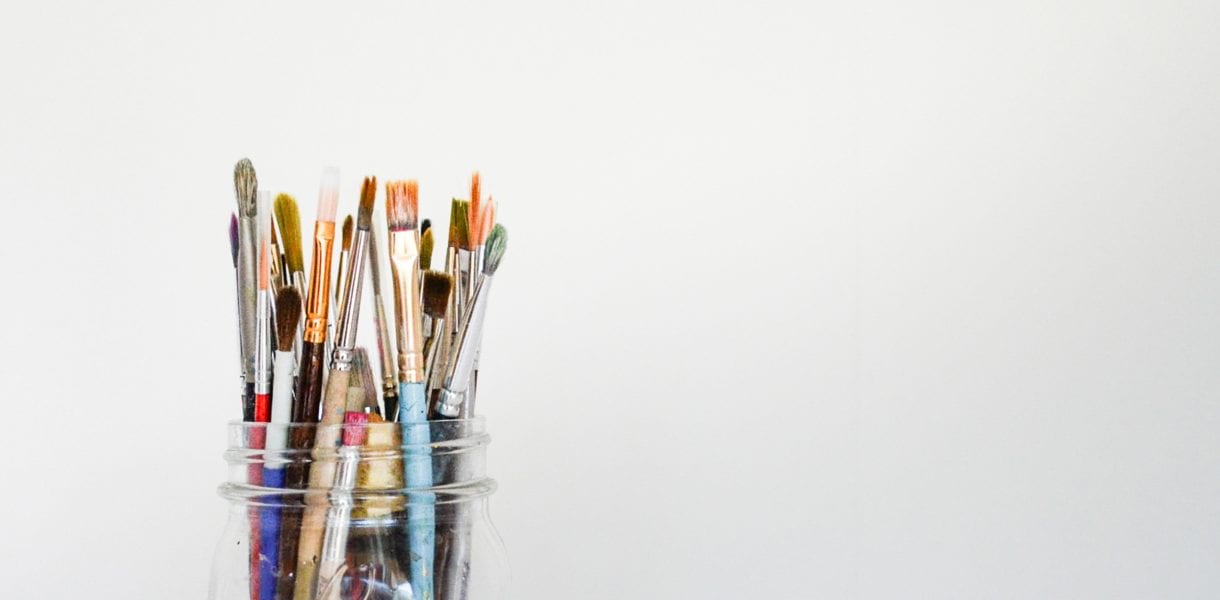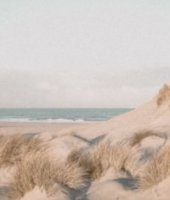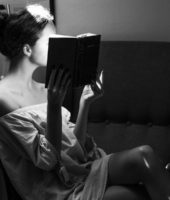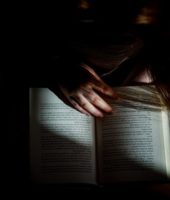Do me a favor. Close your eyes for a second and imagine a creative person. Think about their hair, clothes, environment and what they’re working on. Got it?
Now, open your eyes.
If you’re anything like the majority of the population, you pictured something like this: pastel colors, an oversized desk facing a snowy mountain or foamy ocean, maybe a gash of paint poised over a flushed cheek.
There’s this weird perception out there that an artist creates in a vacuum. Our minds operate only in absolute silence, and only when we’re gracefully staring off into a thicket of pine trees. And while it’s true stillness is a requirement of creativity, the idea that you have to carve out an extra four hours per day to make anything of value is holding us back.
This idea prevents many of us from viewing ourselves as creative in the first place. How can I—a working mother with two small kids and about five sidehustles—possibly make the time for quiet when I crash through my bedroom door like a wrecking ball every evening in an unhinged pursuit of sleep? I chase unconsciousness with the same fervor that I’m supposed to chase inspiration.
This leads to a lot of innovative, raw-edged art that would never be made because we’re too busy, too sleep-deprived, too underpaid, too unfocused and our lives are just too loud. But here’s the good news: We can all engage in the creative process while still living our ear-splitting, messy lives. In fact, the mess might just help.
British educator Graham Wallas breaks down the often murky and disjointed creative process into four phases: preparation, incubation, illumination and verification. Wallas’s phases are cyclical; once we verify our project with ourselves and others, we circle back to the preparation stage and start again—this time, on a new level.
Think of it this way: When you’re going to make a snowman, you first gather information—when it’s going to snow, and how much. Then, you busy yourself with something unrelated while you wait. Once it snows, you get outside and start building. Then, you might show someone else what you’ve created. At this point, once you’ve received feedback, you edit what you’ve already made or get started with the next level: prepping your carrot nose and (in my house, at least) Oreo-cookie eyes.
This is exactly the kind of set-up busy people need so they can create. Instead of relying on meditation rooms and triple shots of espresso, we can work within the four phases of creativity and live our daily lives—we just have to be aware of which phase we’re in and leverage it for efficiency. Here’s how:
Step One: Preparation
During this first phase in the process, we “ready our mental soil” for a creative pursuit. It’s where we start to collect and squirrel away resources we want to use to get us ready for the project we’re about to jumpstart. This is where a lot of writers I know tend to make Pinterest-worthy collages that showcase the book they want to write. An artist may explore different paint palettes. A builder may look up blueprints. When I was planning my book, I obsessively combed the internet for migration patterns of wolves (when I wasn’t parenting and paying bills, of course).
What’s great about this phase is that all you need is an idea and a smartphone. While Wallas and his contemporaries may have had to block out a couple of days and flip through dusty tomes to collect their resources, creatives today can research anything from Jupiter’s moons to jungles in South America with the tap of a screen. You can dig up interesting articles on the origins of coffee beans and save it to an Evernote folder while you wait for a kid’s basketball game to start.
For busy creatives, this is our “acorn season.” We know an eventual “winter” is inevitable, so we stuff away our harvest in little pockets of earth until we’re ready to collect them all.
Step Two: Incubation
The second phase is both the easiest and the hardest—we’ve just got to let it rest. It may go against your instinct to abruptly stop working on a project once you’ve started to gain traction, but Wallas (and Einstein and Elliot) insist this is way more efficient than trudging onward. Wallas quotes his friend Hermann von Hemholtz, writing, “[F]ar as I am concerned, [creative ideas] have never come to me when my mind was fatigued, or when I was at my working table…they came particularly readily during the slow ascent of wooded hills on a sunny day.”
So, what’s a busy creative to do? Well, a lot, actually. We have plenty of real-life matters to keep us busy—most of them insanely boring, at that. While we let the dust settle on our idea, we can set our sights to anything from cleaning out the refrigerator to shopping for a new insurance policy. Or, if we have another project lined up, we can get to knitting those mittens or scrapbooking grandma’s birthday party. I tend to come up with my best insights when I’m moving my body, so it’s off to barre or cycling class for me.
The only criteria for this phase is that we don’t actively work on our project and we work on solving some other problem, instead. Both are pretty easy, considering time away from our creative pursuits is a given, and there’s always some kind of problem to wade through in anything we do.
Step Three: Illumination
The third phase is what most people associate with creativity: the spark of sudden insight. You may recognize it by another name, such as the Muse, the Genius, the Universe or any myriad of disembodied concepts. It’s that white-hot bolt of recognition, a connection between dissimilar things suddenly unearthed.
Wallas argues that this spark can only happen once you’ve given the pieces you’ve collected during the preparation phase space to float around your brain and bump into each other in an organic way while you’re in the incubation phase. In fact, you only get out of the incubation phase once you receive that click of insight.
While we can’t make these connections appear at will, we can set the right circumstances for them to show up. That means doing the opposite of sitting at our polished oak desk, twiddling our thumbs. We do what we have to do—aka, the less glamorous tasks of changing diapers and taking out the trash. But here’s the catch: we need to do them deliberately. Instead of dreaming up character names and plot twists while we fold the laundry, we sink our attention into the crease of the clothes. By completely letting go of a project in all ways, two important things happen: we give our brain the space and time it needs to make those connections efficiently, and we become more present in our own lives. Win-win.
Step Four: Verification
Finally, we move back into the physical realm with the last phase. Now that we’ve struck inspirational gold, it’s time to put some elbow grease back into our project to create a physical product that can be consumed and critiqued (this article, for example, is the result of the verification phase). While Wallas insists following this natural cycle of thought is the key to creativity, he also acknowledges that you’ll probably have to go through the cycle several times for one project. He writes, “All that we can hope from these inspirations, which are the fruit of unconscious work, is to obtain points of departure.”
Here’s what that might look like for a busy creative: we get an insight on a project and we carve out a small block of time—after bedtime or before work—and dedicate our full attention to work from that “point of departure” until we get stuck again and start the cycle over.
Cue the sigh of relief. Wallas points out there’s actually no need to spend extended time on a creative project in one sitting; we only need enough time to make a quick push forward from what we learned in the illumination phase. That could look like an hour or twenty minutes, but it most likely doesn’t mean an entire day. It doesn’t even mean every day. It’s completely possible to make something exceptional when you’re short on time.
The next time someone asks you to envision what an artist looks like, don’t even bother to close your eyes. Go ahead and ditch that stock image photo and think of yourself, instead.
Like this post? View similar content here: How To Stay Creative During The Busiest Month Of The Year






